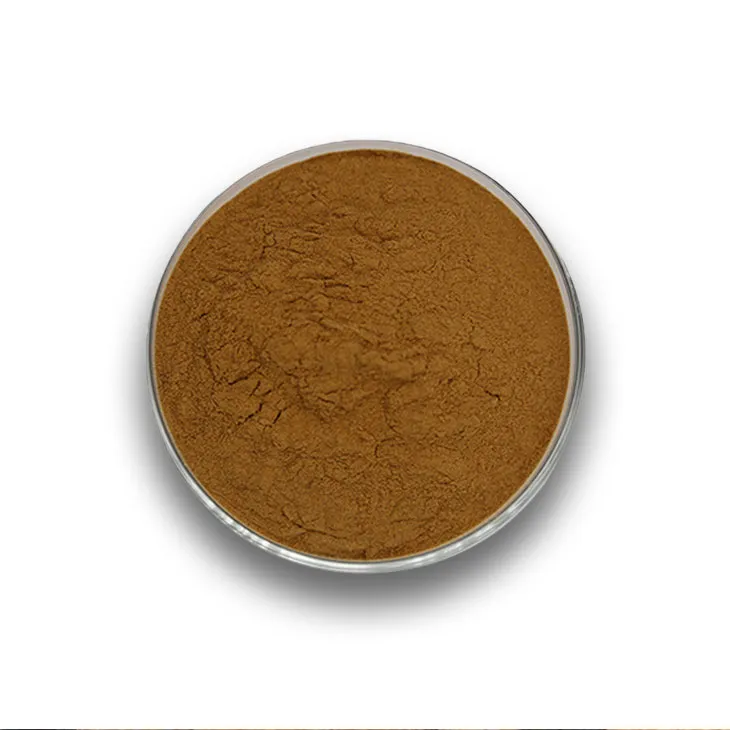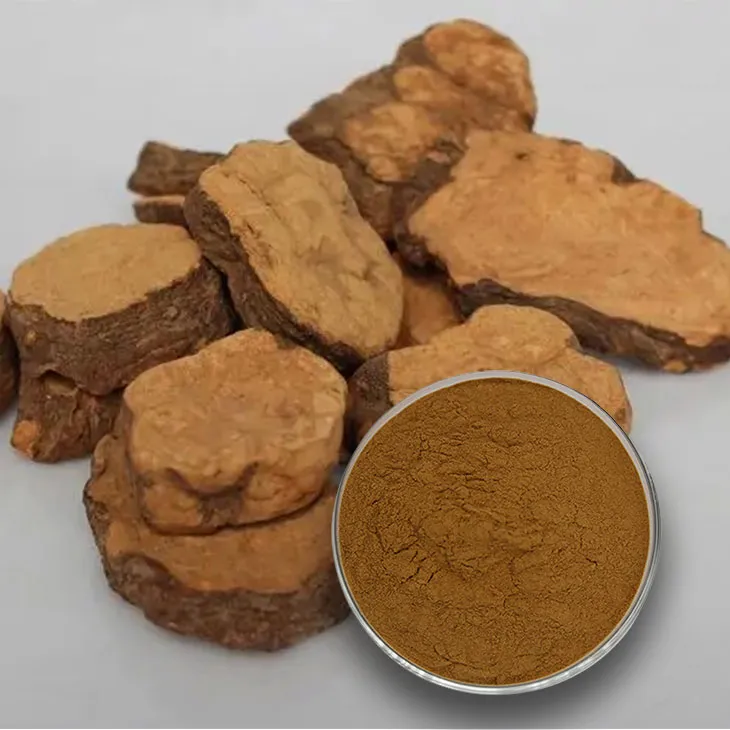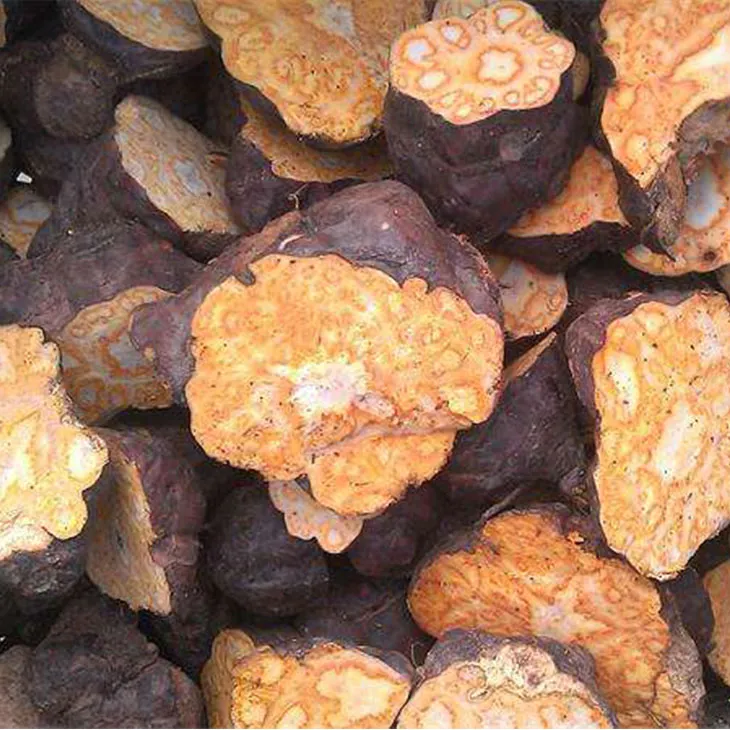- 0086-571-85302990
- sales@greenskybio.com
How to make powder from Polygonum multiflorum extract?
2024-11-27

1. Introduction
Polygonum multiflorum is a well - known traditional Chinese medicinal herb with various potential health benefits. Extracting and converting it into powder form can make it more convenient for various applications, such as in the formulation of herbal supplements or in traditional medicine preparations. This article will guide you through the entire process, starting from raw material selection to the final powder production.

2. Raw Material Selection
2.1 Quality of Polygonum multiflorum
- When choosing Polygonum multiflorum as the raw material, it is crucial to ensure its authenticity. There are some similar - looking plants in the wild, but only genuine Polygonum multiflorum can provide the expected medicinal properties.
- Look for high - quality, dried Polygonum multiflorum. The roots should be intact, without signs of mold, rot, or significant damage. The color should be relatively uniform, typically a dark brown color.
- It is advisable to source Polygonum multiflorum from reliable suppliers. This ensures that the raw material has been properly harvested and processed according to regulations.
- Consider the sustainability of the source. Over - harvesting can lead to the depletion of this precious herbal resource. Some suppliers may follow sustainable harvesting practices, which is beneficial for the long - term availability of Polygonum multiflorum.

3. Extraction Methods
3.1 Solvent Extraction
-
3.1.1 Ethanol Extraction
- Crush the dried Polygonum multiflorum into small pieces. This increases the surface area for better extraction.
- Soak the crushed Polygonum multiflorum in ethanol. The ratio of the raw material to ethanol can be adjusted according to the desired concentration. For example, a common ratio could be 1:5 (1 part of Polygonum multiflorum to 5 parts of ethanol by weight).
- Place the mixture in a sealed container and let it stand for a period of time. This could range from a few days to a couple of weeks, depending on the extraction efficiency desired. During this time, the active compounds in Polygonum multiflorum will dissolve into the ethanol.
- After the soaking period, filter the mixture to separate the liquid extract from the solid residue. A filter paper or a filtration device can be used for this purpose.
-
3.1.2 Water Extraction
- Similar to ethanol extraction, start by crushing the Polygonum multiflorum. However, water extraction may require a finer crushing to ensure better extraction efficiency.
- Boil the crushed Polygonum multiflorum in water. The amount of water used should be sufficient to cover the raw material. Keep the mixture boiling for a certain period, usually around 1 - 2 hours.
- Allow the boiled mixture to cool down and then filter it. The filtrate obtained is the water - based extract of Polygonum multiflorum.
- Supercritical fluid extraction is a more advanced technique. Carbon dioxide (CO₂) is often used as the supercritical fluid in this process.
- The Polygonum multiflorum is placed in a high - pressure extraction vessel. The supercritical CO₂ is then passed through the raw material at a specific temperature and pressure. The active compounds are selectively extracted by the supercritical fluid.
- This method has several advantages, such as being more environmentally friendly (since CO₂ is a non - toxic and recyclable solvent), and it can often achieve a higher purity of the extract compared to traditional solvent extraction methods.

4. Converting the Extract into Powder
4.1 Evaporation
-
4.1.1 Rotary Evaporation
- If the extract is in a solvent - based form (such as ethanol - based extract), rotary evaporation can be used to remove the solvent. The extract is placed in a rotary evaporator flask.
- The flask is then rotated in a water bath at a controlled temperature. The vacuum is applied simultaneously. As a result, the solvent evaporates under reduced pressure, leaving behind a more concentrated extract.
- Care should be taken to control the temperature and vacuum level to avoid over - heating or boiling over of the extract.
-
4.1.2 Natural Evaporation
- For water - based extracts, natural evaporation can be an option. The extract is spread out in a shallow dish in a well - ventilated area.
- Over time, the water will evaporate naturally. However, this method is relatively slow and may be more susceptible to contamination compared to rotary evaporation.
-
4.2.1 Spray Drying
- Spray drying is a common method for converting liquid extracts into powder. The concentrated extract is pumped through a nozzle into a drying chamber.
- Hot air is introduced into the drying chamber at the same time. The liquid droplets are quickly dried into powder particles as they come into contact with the hot air.
- Parameters such as the inlet air temperature, the flow rate of the extract, and the air flow rate need to be carefully controlled to ensure the quality of the powder produced.
-
4.2.2 Freeze Drying
- Freeze drying is another option, especially suitable for extracts that are sensitive to heat. The extract is first frozen at a very low temperature.
- Then, under vacuum conditions, the frozen water in the extract sublimes directly from the solid state to the gaseous state, leaving behind a dry powder.
- Although freeze drying can better preserve the active ingredients in the extract, it is a more expensive and time - consuming process compared to spray drying.
- After the extract has been dried into a solid form, it may still be in the form of lumps or large particles. Grinding is necessary to turn it into a fine powder.
- A mortar and pestle can be used for small - scale grinding. For larger - scale production, a mechanical grinder such as a ball mill or a pulverizer can be employed.
- The grinding process should be carried out until the desired particle size is achieved. The powder should be fine and uniform in texture.

5. Quality Control and Storage
5.1 Quality Control
-
5.1.1 Purity Analysis
- Use analytical techniques such as high - performance liquid chromatography (HPLC) or gas chromatography - mass spectrometry (GC - MS) to analyze the purity of the powder. These techniques can detect the presence of impurities and ensure that the active compounds are present in the expected amounts.
- Compare the results with the standards set for Polygonum multiflorum powder. Any deviation from the standards may indicate problems in the extraction or powder - making process.
-
5.1.2 Microbiological Testing
- Conduct microbiological tests to check for the presence of bacteria, fungi, and other microorganisms. The powder should meet the safety standards in terms of microbiological contamination.
- Common microbiological tests include total plate count, yeast and mold count, and tests for specific pathogens.
- Store the Polygonum multiflorum powder in a cool, dry place. Excessive heat and humidity can cause degradation of the active compounds and promote the growth of mold.
- Use airtight containers to prevent moisture absorption and contamination from the environment. Dark - colored containers can also be used to protect the powder from light, which may cause photodegradation in some cases.
- Label the containers clearly with the name of the product, the date of production, and the expiration date. This helps in proper inventory management and ensures the use of the powder within its shelf - life.
6. Conclusion
Making powder from Polygonum multiflorum extract involves multiple steps from raw material selection to final powder production. Each step requires careful attention to detail to ensure the quality of the final product. By following the methods described in this article, it is possible to produce high - quality Polygonum multiflorum powder that can be used in various applications in the field of traditional medicine and herbal supplements.
FAQ:
Q1: What are the key factors in selecting raw materials of Polygonum multiflorum for extraction?
When selecting raw materials of Polygonum multiflorum for extraction, several factors are crucial. Firstly, the quality and origin of the plant matter. It should be sourced from a clean and unpolluted environment to ensure the absence of contaminants. Secondly, the maturity of the Polygonum multiflorum is important. Mature plants are likely to have a higher content of the desired active compounds. Additionally, proper identification of the plant species is essential to avoid misusing other similar - looking but inappropriate plants.
Q2: What are the common extraction methods for Polygonum multiflorum?
There are several common extraction methods for Polygonum multiflorum. One is the solvent extraction method, where solvents such as ethanol or water are used to dissolve the active components from the plant material. Another method is Soxhlet extraction, which is a continuous extraction process that can effectively extract the desired substances. Supercritical fluid extraction is also emerging as a more advanced method, especially using supercritical CO2, which can provide a more pure extract with less solvent residue.
Q3: How can we ensure the purity of Polygonum multiflorum extract during the extraction process?
To ensure the purity of Polygonum multiflorum extract during the extraction process, several steps can be taken. Firstly, the raw materials should be thoroughly cleaned to remove dirt, debris and other impurities. During the extraction, precise control of extraction conditions such as temperature, pressure (if applicable) and extraction time is necessary. Using high - quality solvents and filtration methods can also help to remove unwanted substances. Additionally, quality control tests at different stages of the extraction process, such as chromatography techniques, can be used to monitor and ensure the purity of the extract.
Q4: What are the steps to transform Polygonum multiflorum extract into powder?
The first step is usually to concentrate the extract if it is in a liquid form. This can be done through evaporation or other concentration methods. Then, drying is a crucial step, which can be achieved through techniques like spray drying or freeze - drying. Spray drying involves spraying the concentrated extract into a hot air stream, which quickly evaporates the moisture and forms fine particles. Freeze - drying, on the other hand, freezes the extract first and then sublimates the ice to leave behind a dry powder. After drying, the resulting powder may need to be milled or sieved to achieve a uniform and fine powder.
Q5: What are the quality control measures for the powder made from Polygonum multiflorum extract?
Quality control measures for the powder made from Polygonum multiflorum extract include several aspects. Physical properties such as particle size distribution, bulk density and flowability should be measured and controlled. Chemical analysis is also crucial, such as determining the content of the active compounds through methods like HPLC (High - Performance Liquid Chromatography). Microbiological tests are necessary to ensure the powder is free from harmful microorganisms. Additionally, stability tests should be carried out to assess the shelf - life and stability of the powder under different storage conditions.
Related literature
- Extraction and Characterization of Active Compounds from Polygonum multiflorum"
- "Optimization of the Powder - making Process from Herbal Extracts: A Case Study of Polygonum multiflorum"
- "Quality Evaluation of Polygonum multiflorum Extract and Its Powder Form"
- ▶ Hesperidin
- ▶ citrus bioflavonoids
- ▶ plant extract
- ▶ lycopene
- ▶ Diosmin
- ▶ Grape seed extract
- ▶ Sea buckthorn Juice Powder
- ▶ Beetroot powder
- ▶ Hops Extract
- ▶ Artichoke Extract
- ▶ Reishi mushroom extract
- ▶ Astaxanthin
- ▶ Green Tea Extract
- ▶ Curcumin Extract
- ▶ Horse Chestnut Extract
- ▶ Other Problems
- ▶ Boswellia Serrata Extract
- ▶ Resveratrol Extract
- ▶ Marigold Extract
- ▶ Grape Leaf Extract
- ▶ blog3
- ▶ blog4
-
Certified organic hawthorn extract.
2024-11-27
-
Bulk purchase of mulberry leaf extract.
2024-11-27
-
Wholesale Suppliers of Eyebright Extract.
2024-11-27
-
Certified organic jujube extract.
2024-11-27
-
The Most Worth - Buying Pure L - Cysteine.
2024-11-27
-
Curcuma Longa Extract
2024-11-27
-
Lily extract
2024-11-27
-
Konjac Powder
2024-11-27
-
Lemon Juice Powder
2024-11-27
-
Black Garlic Extract
2024-11-27
-
Boswellia Serrata Extract
2024-11-27
-
Stevia Extract
2024-11-27
-
Troxerutin
2024-11-27
-
Dandelion Leaf Extract
2024-11-27
-
Hawthorn Extract
2024-11-27





















